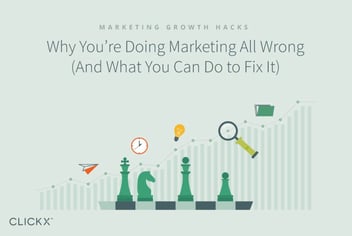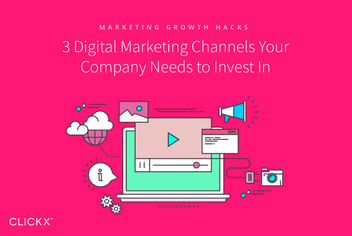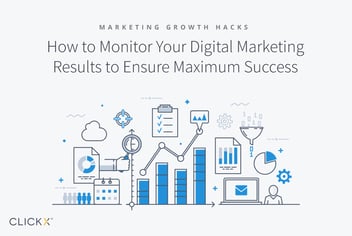Content Marketing vs. Inbound Marketing: How Do They Work Together?

There are many different components to a successful marketing strategy. In order to attract your target audience and convince them to purchase from you, you need to understand how to move them through the sales funnel as efficiently as possible. This usually means including different marketing techniques that work together to push them towards converting.
Two types of marketing that are frequently paired together are content marketing and inbound marketing. While they may seem similar on the surface, they each have their own goals and requirements. However, inbound marketing and content marketing are not nearly as successful without each other. If you want to get the most from your marketing efforts, they need to work together seamlessly.

In this article, we’ll take a look at inbound marketing and content marketing, and how they can work together to attract more leads and convert them into customers.
What is Inbound Marketing?
Inbound marketing is a promotion process that takes into consideration the way the internet is changing the buyer’s journey. Most customers do their own research online before reaching out to a salesperson to buy a product. Therefore, marketers need to harness this fact by offering content that will attract visitors and keep their attention during the research process. Moreover, whereas traditional marketing tactics tend to be interruptive, inbound marketing involves creating materials that are readily available when a customer begins and travels through the buyer’s journey.
However, inbound marketing isn’t only about attracting customers. An inbound strategy should aim to guide visitors along a process that initially converts them into leads. Once leads have been collected, they should continue on to become customers. The entire inbound process can be viewed as having four distinct stages: attract, convert, close, and delight.

This visual of the Inbound Methodology from HubSpot clearly shows how inbound marketing can help you convert strangers into happy customers. It also gives you an idea of what kinds of content you might use at each phase of the process. There are many ways to approach inbound marketing, and as such there are various ways to get results. It typically includes utilizing a variety of tactics, like email marketing and social media marketing.
At the foundation of any inbound marketing strategy is a great content strategy. When high-quality content is used as part of an inbound campaign, it is easier to attract the audience’s attention, keep them on your website, and convince them to make a purchase.
What is Content Marketing?
Content marketing is often viewed as one of the subsets of an inbound plan. However, unlike some inbound subsets, content marketing is a non-optional one and is key to a successful inbound strategy. It involves the creation of material that addresses consumer needs at every stage of the buyer’s journey. The purpose of the content can range from outlining problems and providing solutions to building trust and even closing sales.
[Tweet “Content marketing can be viewed as a subset of inbound marketing, albeit a crucial one.”]
%20(1).webp?width=1280&height=758&name=Screen-Shot-2017-05-05-at-6_31_10-PM%20(1)%20(1).webp)
While high-quality blog posts, like this example from Help Scout, are important for a content marketing strategy, most successful marketers utilize a variety of content types, including case studies, podcasts, and videos. This makes sense since different audience members and demographics respond better to certain kinds of content throughout the buyer’s journey. Offering different forms has many benefits, including accessing a broader audience and holding their attention for longer periods.
However, there’s no point in creating high-quality content if it’s targeted towards the wrong people. It’s important to consider buyer personas as well as what they might be looking for. This typically involves lots of research up front, including extensive keyword research as well as applying demographic knowledge to find out which content forms will perform the best.
Creating high-quality content for the right people isn’t enough to bring interested audience members to your website and convert them into leads and customers. While content marketing is critical, without a solid inbound plan, your efforts are unlikely to get the desired results.
How Can You Make Them Work Together?
As mentioned, content marketing could function without an inbound strategy, but it’s less likely to yield the desired results. On the other hand, an inbound strategy needs content in order to exist, but it’s the quality of the content that can sway a campaign’s success. In short, in order to make either successful, you need to focus on both. You need to have an excellent inbound plan and some killer content to boot.
Because of the amount of overlap between inbound marketing and content marketing, it can be difficult to know where to start. That is why you need to consider both in the planning stages of each campaign and ensure they are working together from the very beginning.
Think about what you would like to accomplish with your inbound strategy. Know how you would like to attract customers, how you would like them to convert to leads, and what information they may need to become a paying customer. Once you’ve established your inbound expectations, consider what kinds of content you need to create to achieve those goals.
Each blog post, video, or infographic you create as part of your content strategy should have a unique goal in mind. Whether that is to increase brand awareness or convert leads, knowing what you’d like to accomplish with your content can make it stronger. Moreover, in addition to identifying your expectations, you need to know which stage of the inbound process that goal falls under.
As you make adjustments to either strategy, recognize how it may influence the other. Shifting the content you create means you’ll be attracting new leads in different ways. Make sure each change positively impacts your marketing strategy as a whole.
Conclusion
Inbound marketing and content marketing are two key components of your online strategy. When you understand how they are different, what they involve, and how to make them work together, you’ll soon reap the benefits.
Let’s recap the differences between inbound marketing and content marketing:
- Inbound marketing involves attracting new leads and customers by helping them rather than interrupting them.
- Content marketing involves the creation of informative, entertaining, and persuasive content for customers at all levels of the sales funnel.
- Content marketing is often seen as a subset of inbound marketing, so you’ll need to consider your inbound strategy when creating your content.
What kinds of content do you think will improve your inbound strategy? Let us know in the comments section below!



